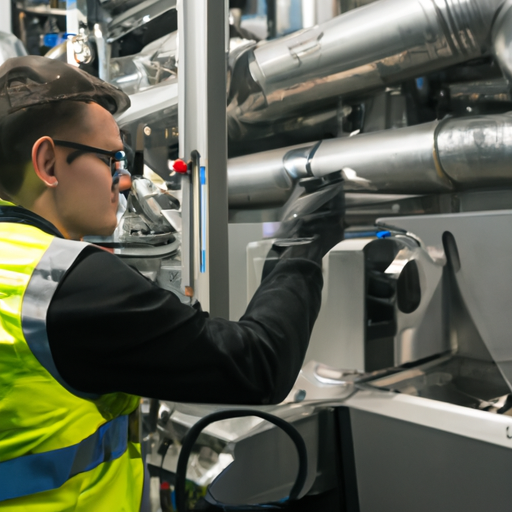The Significance of Regular Inspections in Minimizing Equipment Failures
The role of inspections in preventing equipment failures and minimizing downtime cannot be overstated. Regular inspections are a critical part of any maintenance program and play a significant role in ensuring the smooth operations of equipment and machinery.
By conducting routine inspections, companies can identify potential issues and address them before they lead to costly breakdowns and unplanned downtime. These inspections involve carefully examining equipment, checking for signs of wear and tear, monitoring performance parameters, and looking for any abnormalities or malfunctions.
One of the key benefits of regular inspections is that they help identify early warning signs of equipment failure. By detecting these signs early on, maintenance teams can take proactive measures to repair or replace components, eliminating the risk of a sudden breakdown. This approach not only prevents unexpected equipment failures but also saves time and money by avoiding costly repairs and production delays.
Furthermore, inspections also help in maintaining optimal equipment performance. Over time, equipment may become less efficient due to factors like dirt buildup, inadequate lubrication, or worn-out components. Regular inspections allow maintenance teams to spot these issues and take corrective actions such as cleaning, lubricating, or replacing parts to restore equipment to its optimal working condition.
Another aspect worth mentioning is the role of inspections in ensuring adherence to safety regulations. Equipment failures can pose serious safety hazards, endangering the lives of workers and damaging company property. Regular inspections help in identifying potential safety risks and taking prompt actions to mitigate them. This ensures a safer working environment for employees and minimizes the chances of accidents and injuries.
In conclusion, regular inspections play a pivotal role in preventing equipment failures and reducing downtime. By identifying early signs of failure, maintaining optimal performance, and ensuring safety compliance, inspections contribute significantly to the overall efficiency and productivity of the company. Incorporating inspections as a part of a comprehensive maintenance strategy is vital to avoiding costly breakdowns, maximizing equipment lifespan, and promoting a safe working environment.
How Inspections Help in Avoiding Downtime and Maximizing Equipment Reliability
The Role of Inspections in Preventing Equipment Failures and Downtime
When it comes to maximizing equipment reliability and avoiding costly downtime, inspections play a crucial role. Regular inspections not only help identify potential issues before they become major problems but also ensure that equipment is operating at peak performance. In this article, we will explore the importance of inspections in preventing equipment failures and downtime.
Inspections serve as a proactive measure to maintain equipment reliability. By conducting regular inspections, businesses can identify any signs of wear and tear, potential malfunctions, or other issues that could lead to equipment failure. Addressing these issues promptly can prevent breakdowns and subsequent downtime, saving both time and money.
Inspections also help in detecting early warning signs of potential equipment failures. By performing thorough inspections, technicians can identify any abnormalities or deviations from normal operating conditions. This allows for timely troubleshooting and corrective actions, which can prevent catastrophic failures and prolonged downtime.
Another crucial role of inspections is to ensure that equipment is operating within specified parameters. Many pieces of equipment have specific performance standards that they need to adhere to. Regular inspections can help verify if equipment is meeting these standards or if any adjustments or maintenance are required.
Moreover, inspections enable businesses to assess the overall condition of their equipment. By carefully examining different components, such as belts, cables, filters, and lubrication systems, technicians can identify any signs of degradation or impending failure. This allows for proactive maintenance to replace worn-out parts or repair potential issues, ultimately reducing the risk of unexpected breakdowns and subsequent downtime.
In addition to preventing equipment failures and downtime, inspections also contribute to improving equipment efficiency and extending its lifespan. By addressing minor issues before they escalate, inspections enable businesses to optimize equipment performance. Regular and detailed inspections can identify areas of improvement, such as optimizing lubrication, replacing outdated components, or implementing preventive measures to minimize equipment wear and tear.
To wrap up, inspections play a vital role in avoiding equipment failures and maximizing equipment reliability. By conducting regular inspections, businesses can identify potential issues, address them promptly, and ensure that equipment operates at peak performance. This proactive approach minimizes the risk of costly downtime, enhances equipment efficiency, and extends its lifespan. Incorporating inspections as an integral part of maintenance strategies is a key step toward preventing failures and maximizing overall productivity.



